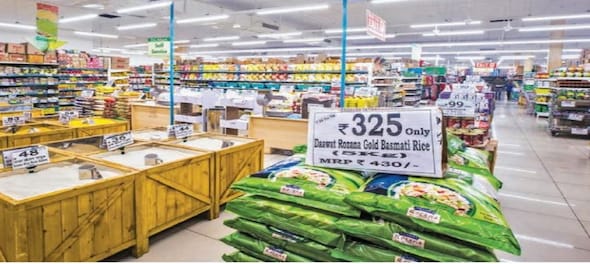
Sales of fast-moving consumer goods (FMCG) declined by 10 percent in January 2022, compared to the previous month, data from retail intelligence platform Bizom showed, both on the back of the month seeing the peak of the third wave, and a lull post the festive season.
Compared to January 2021, FMCG sales expanded 9.5 percent, indicating a lesser impact on sales compared to the other two waves of COVID-19. With vaccination coverage picking up, despite cases rising to nearly 3.5 lakh during the third wave.
Bizom data covers transactions done in 4.5-5 million kirana stores across India. Urban markets saw a higher impact in sales, which declined 18.3 percent MoM and 15.6 percent YoY. Also, rural markets made some impact sequentially declining 7 percent. However, compared to January 2021, sales grew 21 percent. This is again because out-of-home had not recovered completely by January last year.
Also Read:
According to Bizom's data, compared to a 10 percent decline in the third wave, during the peak of the first wave in 2020, FMCG sales saw a decline of 27.4 percent month-on-month, while they declined 16 percent, MoM, in the second wave in 2021.
This, Bizom said is driven both by strong sales of commodity products such as rice, pulses, wheat, oil, etc. and also because mobility wasn’t impacted during the third wave, as it did in the first two.
Sales of commodity products were up 4.3 percent sequentially and up 43.1 percent YoY. However, discretionary items saw some slowdown with confectionary sales declining 13.9 percent MoM and 41.6 percent YoY.
Beverage sales, on the other hand, declined sequentially but were up over 26percent on a YoY basis.
"Beverage products had begun strong seasonal stocking towards the latter part of January last year, that early start to summer stocking was missing this year on account of the third wave," Akshay D’Souza, chief marketing officer, Bizom said.
Another sign that indicated the recovery of out-of-home was the sales of packaged foods. While they saw some decline sequentially, compared to January 2021, they grew nearly 38 percent
"Over the last year, we have seen that packaged foods have had a strong growth in sales indicating a significant increase in consumption from Out of home driven by strong vaccination rates and the third wave perceived to be mild in nature and not as fatal as was experienced in earlier waves," Akshay added.
A similar sentiment was echoed by FMCG majors during their Q3 results as well. Ritesh Tiwari, the chief financial officer of Hindustan Unilever Ltd (HUL) said discretionary portfolio has started to grow over the last two quarters, ahead of 2019 levels. The likes of ITC and Dabur said they are seeing strong recovery and growth in their discretionary portfolio.
However, it is important to note that FMCG growth has mainly been value-led, also on the back of price increases undertaken by nearly all FMCG majors on the back of surging input costs. Rising costs and tapering off of demand have been impacting both urban and rural markets and FMCG majors expect input costs to continue to be a challenge in the current quarter as well.
Addressing the media during its Q3 results, Sanjiv Mehta, chairman and managing director of HUL said the company has not seen this kind of inflation across commodities, which is also leading to consumers tightening their purse strings. He also alluded to a slowdown in rural from both a volume and value perspective.
"Enhanced vaccination coverage coupled with an uptick in business and consumer sentiments led to broad-based growth across markets and channels even as leading indicators reflected a deceleration in the pace of rural demand recovery. However, unprecedented inflation in commodity prices, increase in energy costs, and persistent global supply chain disruptions weighed on the macroeconomic environment," ITC said during its Q3 results.
(Edited by : Jomy Jos Pullokaran)
Check out our in-depth Market Coverage, Business News & get real-time Stock Market Updates on CNBC-TV18. Also, Watch our channels CNBC-TV18, CNBC Awaaz and CNBC Bajar Live on-the-go!


Punjab Lok Sabha elections: Check full list of AAP candidates and constituencies
May 18, 2024 12:59 PM
PM Modi, Rahul Gandhi election rallies in Delhi today: Here are the routes to avoid
May 18, 2024 11:28 AM

